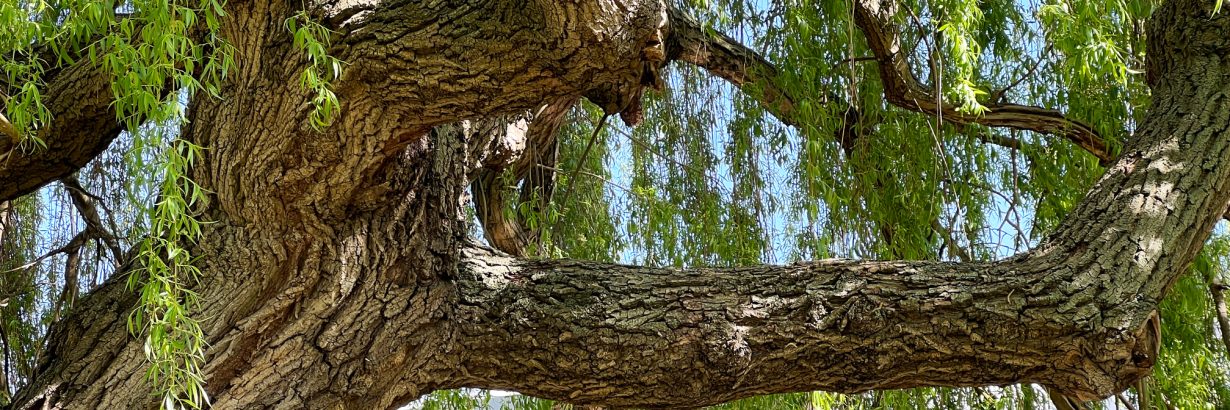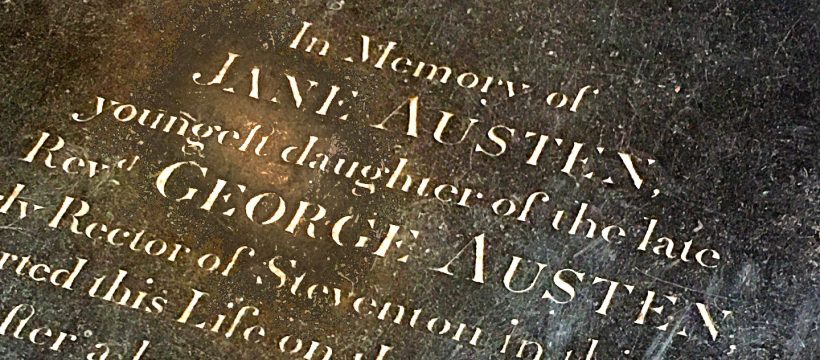On Tuesday 22nd November the Geezers enjoyed their last coach trip of the year – to Winchester. The coach picked them up outside the Tredegar Community Centre in Morville Street, Bow.
They went to visit Winchester Cathedral Christmas Market, one of the best in Europe. Attractive wooden chalets, traditionally seen in Germany, are situated within the grounds of the Cathedral. A programme of musical performances are taking place on a specially constructed stage.
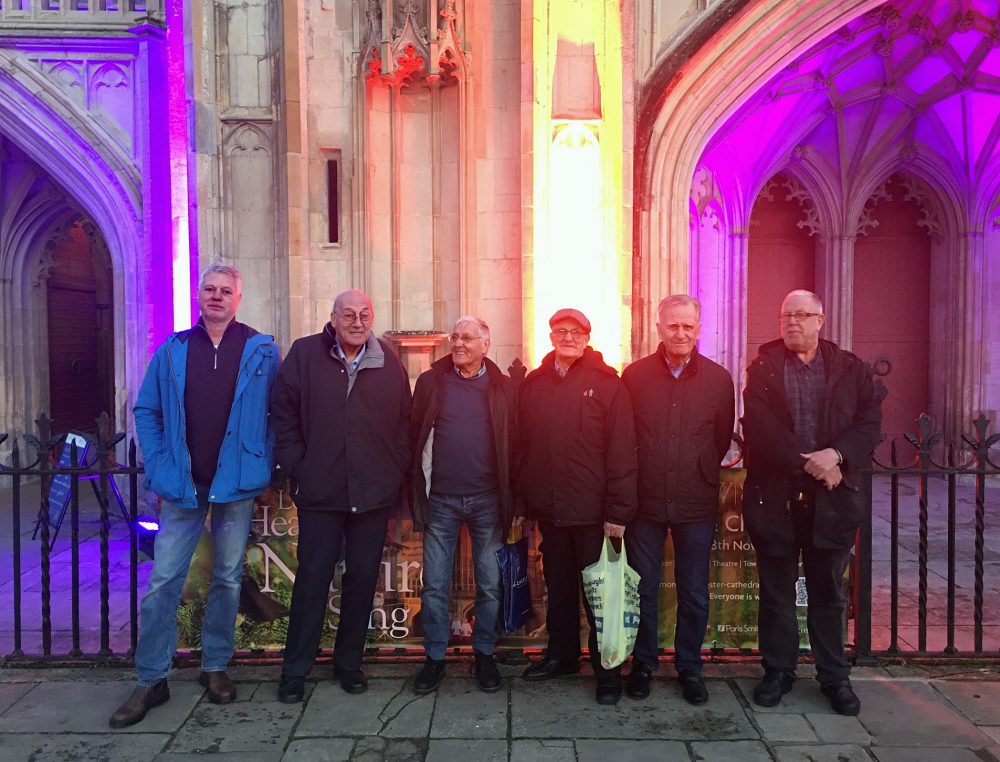
After visiting the Christmas Market the Geezers went inside the Cathedral. Geezers Chairman, Eddie Snooks, said: “The Christmas market is guaranteed to get even Scrooge into the Christmas spirit. Winchester Cathedral’s history and architecture left us amazed. The Cathedral is the burial place of ancient Kings, Bishops and of course the author Jane Austen.”
The full name of what is colloquially called Winchester Cathedral is: The Cathedral Church of the Holy Trinity, Saint Peter, Saint Paul and Saint Swithun. It was built largely between 1079 to 1532, replacing the ‘Old Minster’ – 662 to the arrival of William the Conqueror. Tombs of the old Saxon Kings, including Alfred the Great and King Canute, were moved from the Old Minster into the new cathedral. It’s got some history!
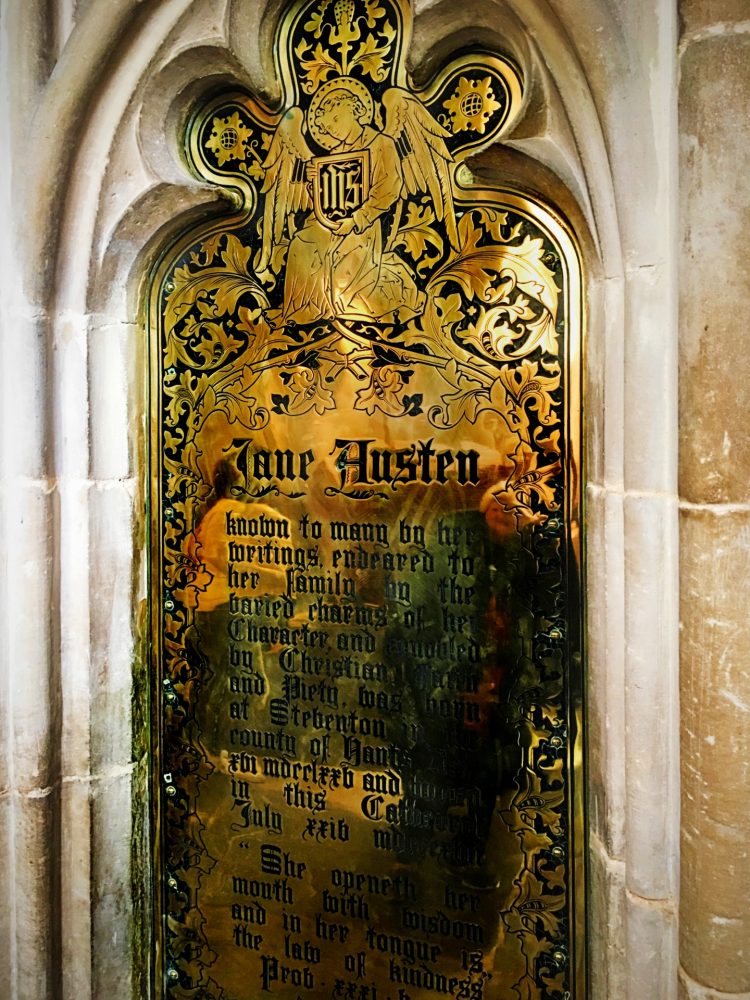
Jane Austen’s grave stone makes no mention of her published books, and the memorial just refers to writings. There’s a reason for that. In her own lifetime all of her novels were published anonymously. Her second novel, Pride and Prejudice, was promoted as by the same author as Sense and Sensibility. Her publisher, Egerton, paid her £110 for the copyright to Pride and Prejudice. That was just under half of her father’s annual income. Print runs at that time were around 500 – 2,000 copies. Readership was small, and publishing was a risky financial bet. Books were printed slowly by hand, and distributed using horses. All six of her novels were written or completed in the last eight years of her life when she lived at Chawton, about 20 miles from Winchester.
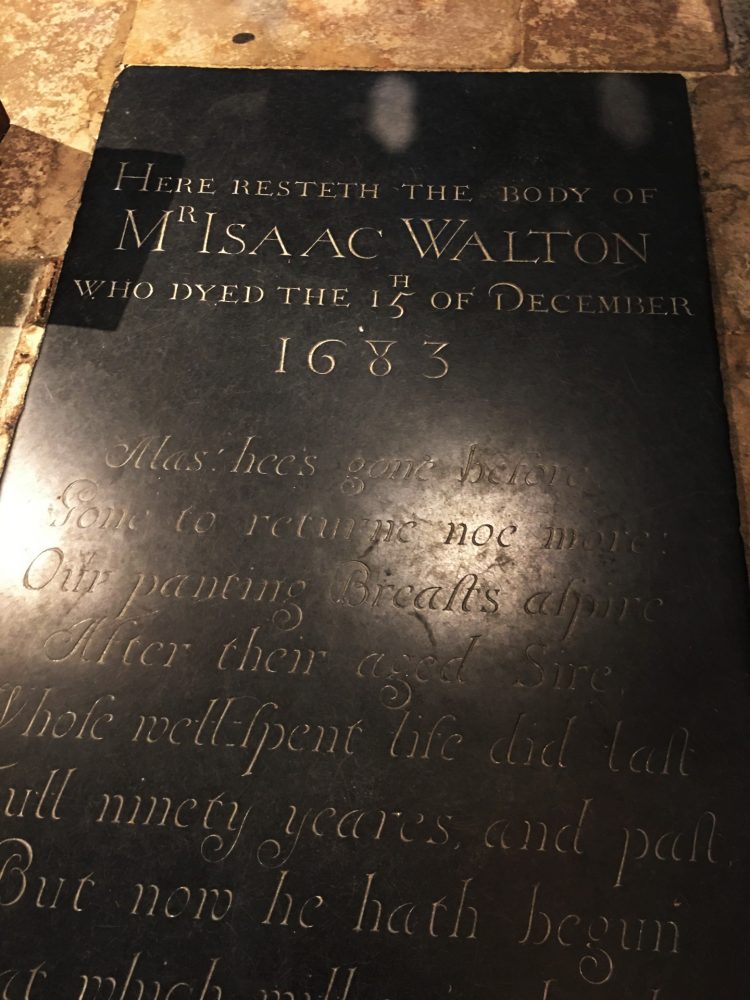
Another famous author, of a different kind. The Compleat Angler, first published in 1653, was a celebration of the art and spirit of fishing in prose and verse.
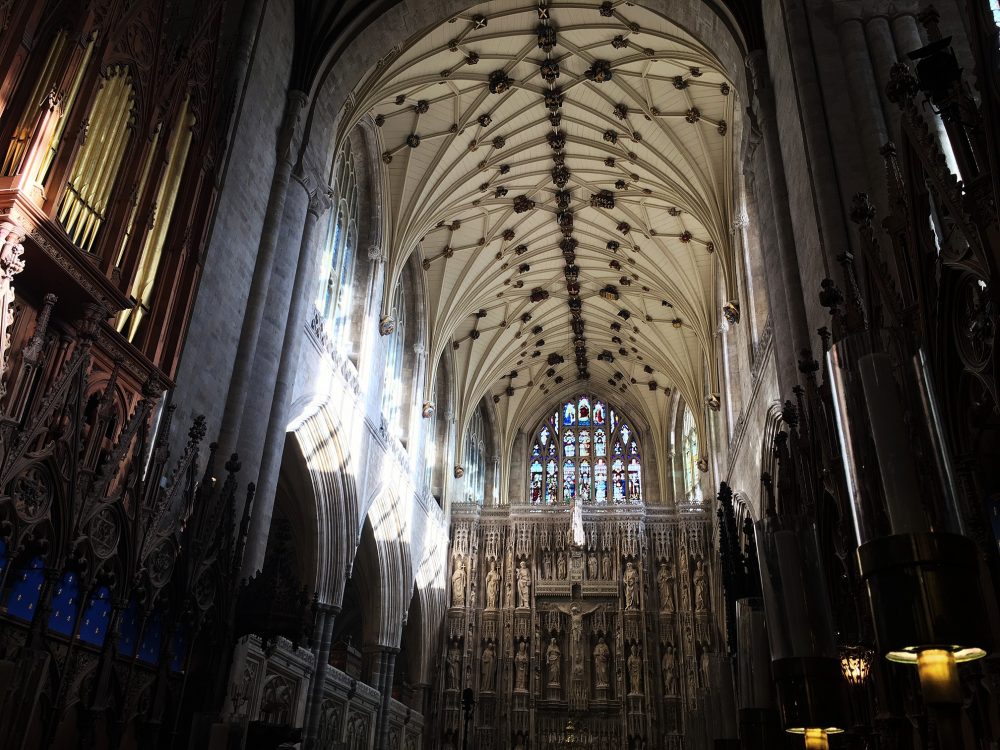
At the turn of the 20th Century the whole cathedral was slowing sinking into the ground and cracks were appearing in the walls. For a while nobody could work out what to do about this urgent situation. Leading architect Thomas Jackson contacted the engineer of the Mersey Tunnel, Francis Fox. They dug an exploratory trench and discovered that the Normans had built this enormous stone cathedral on a raft of beech trees. It had lasted over 900 years! Every solution they tried failed, including pumping out the rising groundwater. In 1906 they called in William Walker, a diver. He spent six years working in diving suit which weighed 200 lbs (91 kilos) dragging bags of cement under the walls in pitch blackness. In his six years Walker placed 25,000 bags of concrete, 115,000 concrete blocks, and 900,000 bricks under the walls. Without his herculean efforts we’d be looking at a pile of rubble today.

Eddie said: “The Geezers also had their Christmas dinner at The Wykeham Arms, a lovely pub that served us lovely food.” This 18th century pub is very close to the cathedral, and has beer on hand pumps. In 2022 The Times newspaper voted The Wykeham Arms in Winchester as one of their top 30 pubs in the UK.

